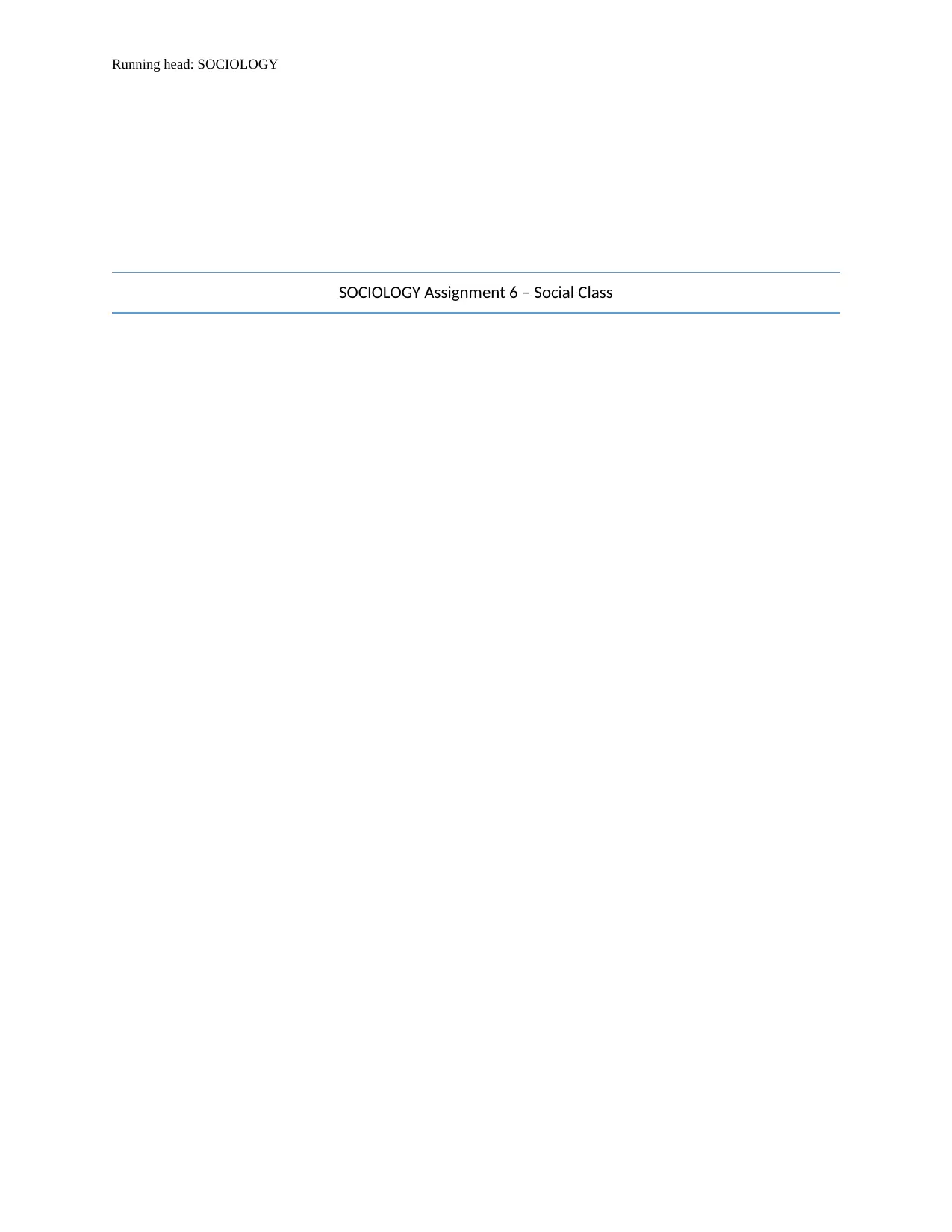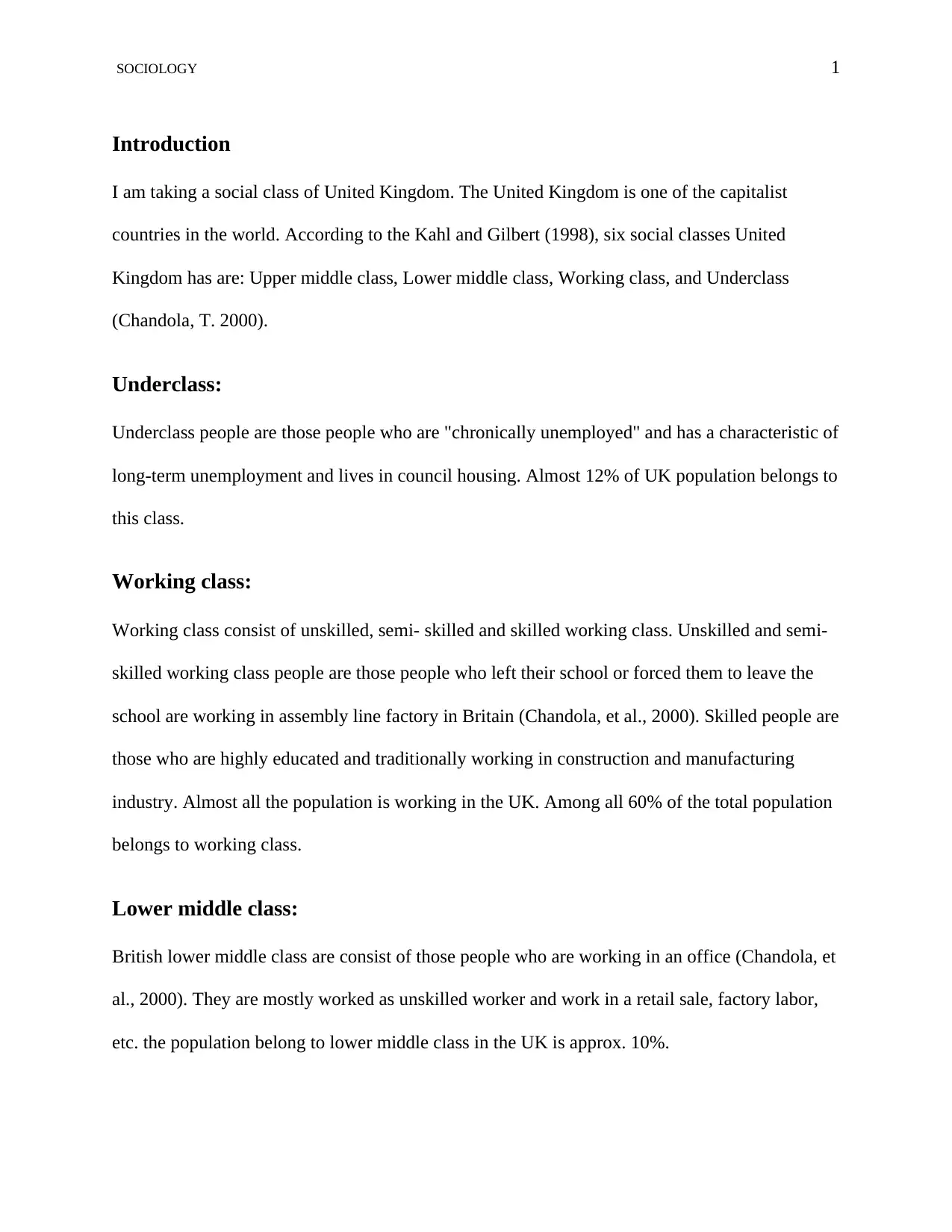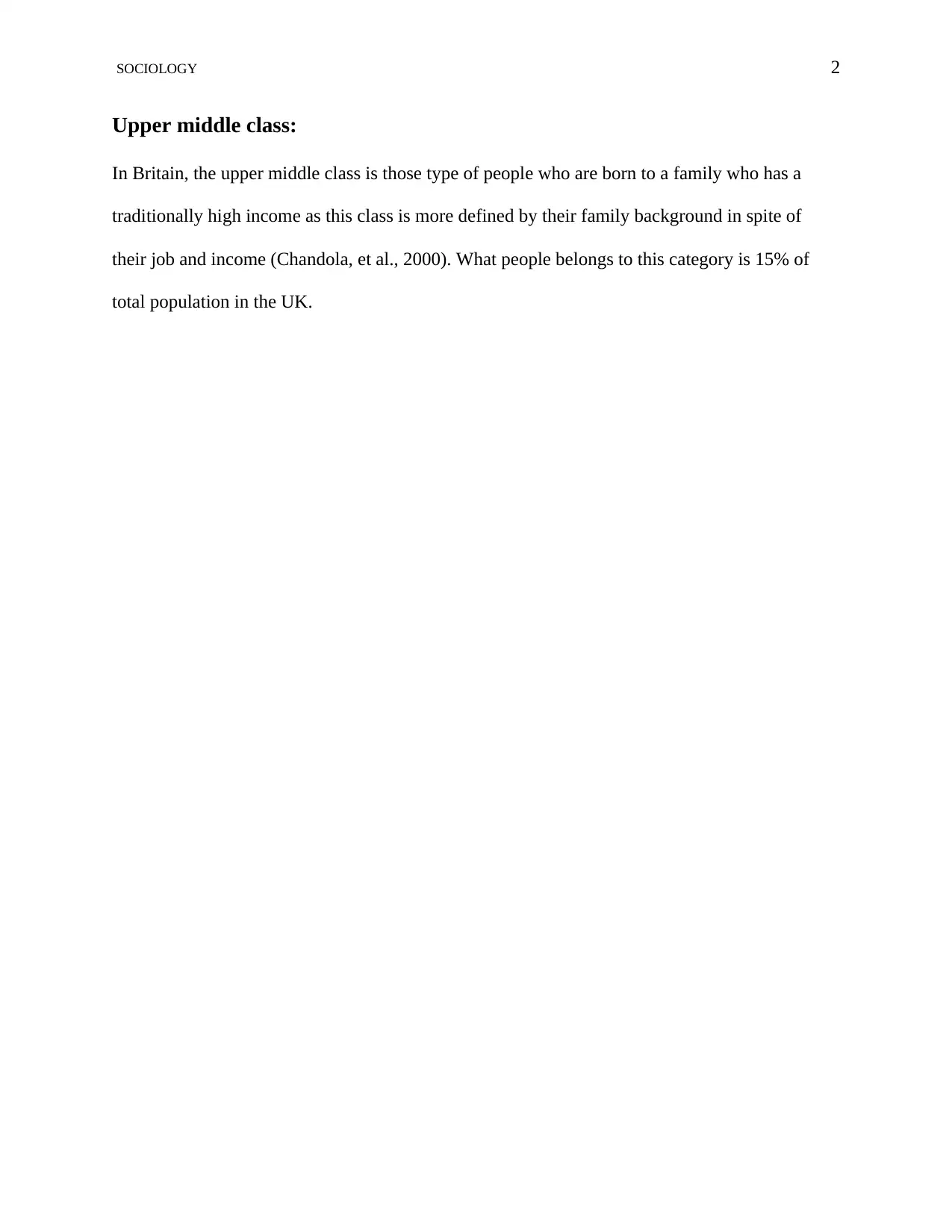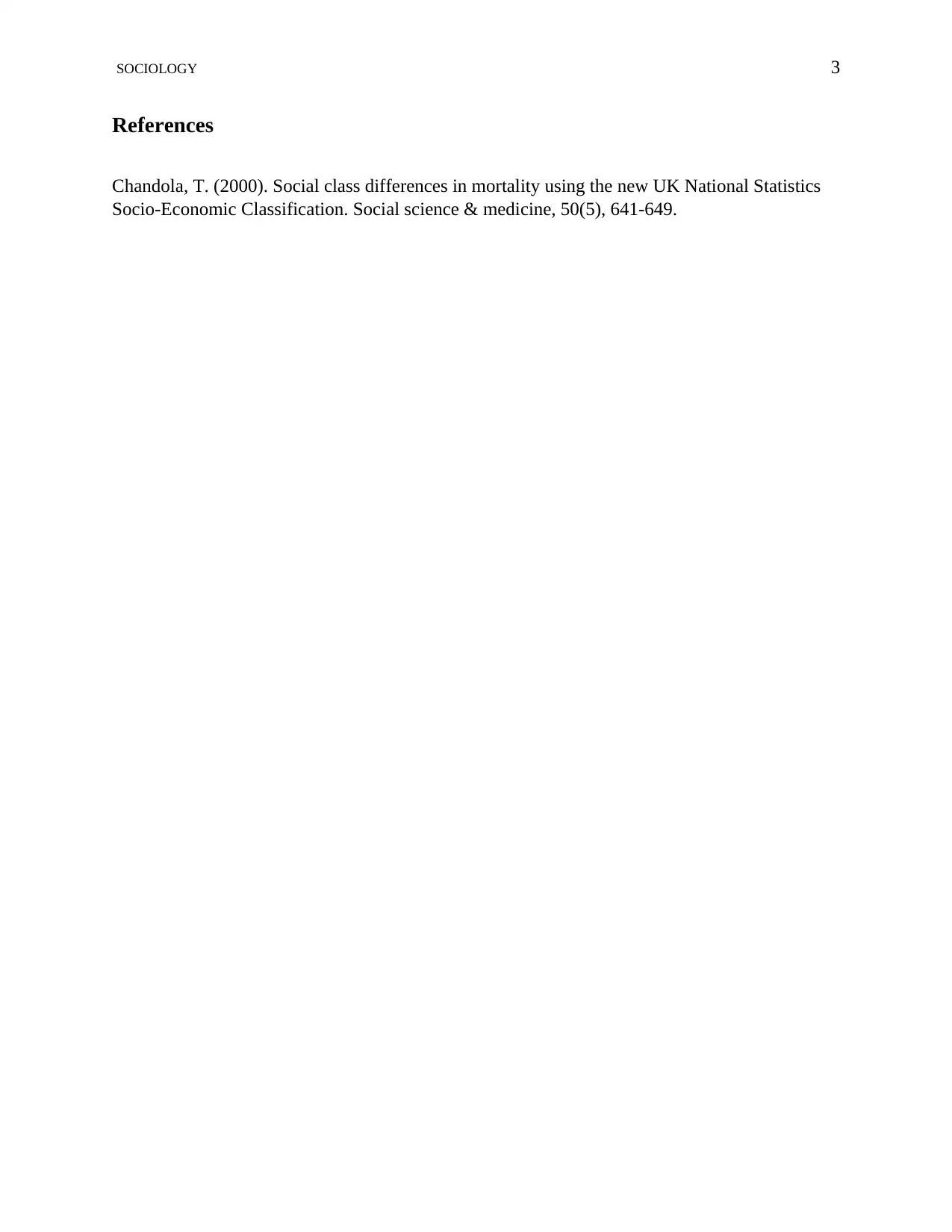Examining the Social Class Structure of the United Kingdom
VerifiedAdded on 2019/09/30
|4
|371
|86
Homework Assignment
AI Summary
This assignment analyzes the social class structure in the United Kingdom, focusing on the upper middle class, lower middle class, working class, and underclass. It highlights the characteristics of each class, such as the unemployment rates of the underclass and the types of jobs held by the working and lower-middle classes. The assignment references the work of Chandola (2000) and Kahl and Gilbert (1998) to provide a comprehensive overview of the social class system in the UK. It explores the percentage of the population that belongs to each class. The assignment provides insights into the distribution of wealth and opportunities across different social strata within the UK.
1 out of 4











![[object Object]](/_next/static/media/star-bottom.7253800d.svg)